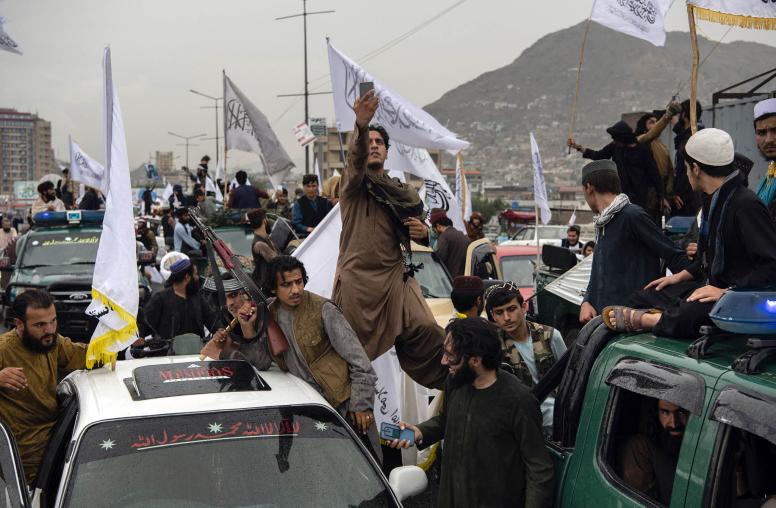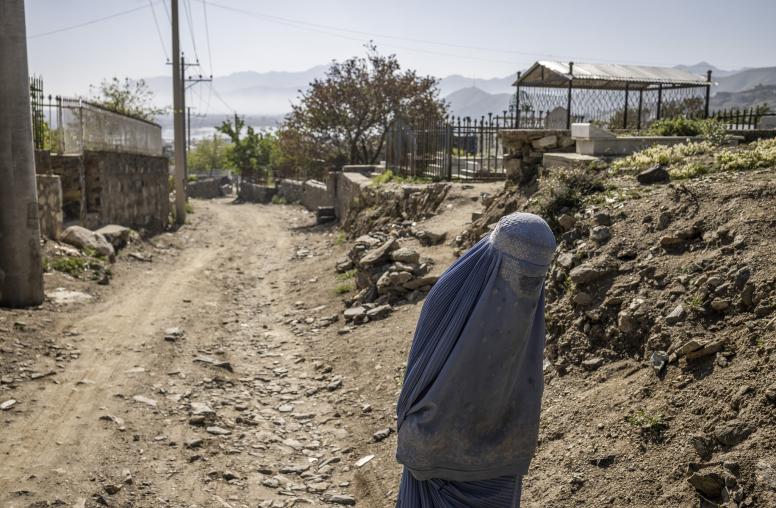Seize This Moment for Afghan Peace Talks
Despite recent attacks, the Taliban has signaled willingness to bend from its hardline past.
Visiting Kabul last month, I found the hot topic of conversation around the city was the growing hope for a peace process with the Taliban. Even though the fighting continues, nearly all serious observers believe a political settlement in Afghanistan is the only plausible alternative to open-ended war. So, while Taliban leaders over the last month have announced their annual spring offensive and disputed Kabul and Washington’s sincerity about making peace, they concurrently show signs of flexibility in how they envision a potential peace deal. U.S. and Afghan leaders may be able to at last jump-start a viable peace negotiation, but it will take creative contacts with Taliban leaders and reasonable consideration of their core demands.

Earlier this year, a series of Taliban attacks in Kabul made peace seem as remote as ever. Since then, we have seen signs of progress: Afghan President Ashraf Ghani has issued a major peace offer to the Taliban, pro-peace demonstrations have spread across much of Afghanistan, and high-profile conferences in Uzbekistan and Indonesia have helped galvanize international support for Ghani’s peace effort.
Will these developments change the Taliban’s unwillingness to negotiate directly with Kabul?
Speaking to a range of contacts in Kabul who maintain channels to Taliban figures, I heard one message consistently: After nearly two months of relative silence, they believe it is very unlikely Taliban leaders will accept Ghani’s offer, for two reasons. First, the Taliban deem the Kabul government illegitimate, and their war’s religious justification depends on this argument—accepting Kabul as a negotiating partner would imply a degree of legitimacy. Second, while the offer contained elements that the international community rightly considered bold and new, it did not address the Taliban’s core demand that foreign troops leave Afghanistan. Fairly or unfairly, the Taliban believe Ghani’s offer merely reaffirmed that they can “surrender” at any time by joining Afghanistan’s current system.
In spite of those demands, I see a strategic opportunity. Since 2001, the Taliban have fought to end the foreign troop presence and remove what they consider a puppet government in Kabul. For much of this time, the Taliban insisted that every foreign troop leave before they would discuss Afghanistan’s political future, and that their pre-2001 “Islamic Emirate” return to power. My conversations and the work of other researchers, however, consistently suggest that these demands have softened significantly over time. Instead of an immediate troop withdrawal the group now seeks a general timetable, potentially one tied to specific milestones in a peace process. Moreover, most of my contacts say the Taliban now accept the bulk of the post-2001 order in Afghanistan—including elections and greater rights for women and ethnic minorities. They will insist on at least a nominally new constitution that establishes a new government, but even this might closely resemble the status quo so long as it allows the Taliban to demonstrate that they ended the post-2001 system that (in their view) foreign troops imposed.
These positions are still more than what Kabul or Washington currently are, or should be, prepared to accept. They also do not imply the Taliban will show restraint this fighting season; for now, all parties continue to treat their military and dialogue efforts as separate. The building blocks they imply, however—a conditional timetable for the U.S. troop presence, a process to amend (or ultimately reissue) the Afghan constitution, and the election of new leadership under that constitution—are well within what skilled diplomats and military planners can begin to work with.
To do so, the first step is to establish a quiet workaround to the years-long impasse over whether the Taliban should negotiate with Washington (as the Taliban argue) or with Kabul (as all other parties argue). Some may argue that the Taliban must cave on this point before any larger negotiation is possible, but the issue has already delayed talks for too many years, and a viable workaround likely lies in an expanding network of back channels, intermediaries, and personal relationships between Afghan leaders and their Taliban countrymen. Dexterous use of these channels could at last allow for a less formal, but more substantive, dialogue among Kabul, Washington, and the Taliban.
While the State Department—and specifically Alice Wells, State’s tough and experienced senior official for South Asia—must lead this fundamentally diplomatic effort, support from the rest of the U.S. government is vital. The Pentagon can hammer out scenarios in which U.S. troops redeploy or adjust their mission in response to positive steps by the Taliban, thus turning our military presence into diplomatic leverage. The intelligence community can provide vital insight on what the Taliban and other parties could accept in a potential peace deal. The White House can message at the senior most levels that the Trump administration’s goal is in fact to pull troops out of Afghanistan, but only in the context of a meaningful peace agreement that addresses U.S. counterterrorism interests.
Having worked on this effort for the State Department from 2010 to 2017, I can attest to the many obstacles to reviving the peace process, and I am pessimistic that formal negotiations will start anytime soon. It might nonetheless be possible to at last hold a substantive discussion of Afghanistan’s political future—and the U.S. role in it—that includes the Taliban in an informal setting. One should never be too optimistic about breakthroughs in the long-stalled Afghan peace process, but in Kabul it is hard not to notice that important pieces are creeping into place.
These positions are still more than what Kabul or Washington currently are, or should be, prepared to accept. They also do not imply the Taliban will show restraint this fighting season; for now, all parties continue to treat their military and dialogue efforts as separate. The building blocks they imply, however—a conditional timetable for the U.S. troop presence, a process to amend (or ultimately reissue) the Afghan constitution, and the election of new leadership under that constitution—are well within what skilled diplomats and military planners can begin to work with.
This was originally published in Defense One.



